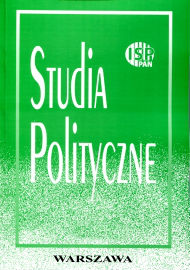Miejsce plenum Komitetu Centralnego PZPR w systemie politycznym PRL w latach siedemdziesiątych
The position of the plenary sitting of the CC PUWP in the political system of the PPR in the 1970s
Author(s): Piotr OsękaSubject(s): Politics / Political Sciences
Published by: Instytut Studiów Politycznych PAN
Keywords: Edward Gierek; Wladysław Gomułka; Jan Lutyński;
Summary/Abstract: According to its bylaws, the plenary sittings of the Central Committee of the PUWP were the highest authority in the party between the latter’s conferences. Although in the 1970s they were convened almost one and a half times as frequently as in the Władysław Gomułka years, it is difficult to ascertain whether this change signified that the importance of this body was reduced or enhanced. Supplementing the plenary debates by issue-oriented debates, carried out in working groups, was undoubtedly a significant contribution made by Gierek to history of this institution. The role performed by the plenary sitting of the Central Committee in the political system of PPR may be considered on two planes. Most researchers agree that the meetings of the full members and alternate members of the Central Committee, held every few months, were a manifestation of the ritualisation of official life; they were thus a typical example of a “feigned institution”, as described by professor Jan Lutyński. The long, but generality-filled speeches, devoid of a punch line, and the unanimous voting, all this is persuasive of the argument that the plenary sittings served neither decision making nor agreeing positions but were rather more an imitation of “collegiality” in running the party and the state. On the other hand, the significance of the plenary sittings increased in times of crisis. It was at the sittings of the CC that 1st Secretaries were recalled and their successors were appointed. It was not by accident that, in the periods of social disturbance, both Gomułka and Gierek attempted to prevent the plenary sittings to be convened. A careful analysis of the transcribed reports also indicates that not all the CC’s sittings proceeded according to the leaders’ expectation. These conclusions are confirmed in the reminiscences of the former PUWP dignitaries. They admit that the ritual of the plenary sitting made it possible for the participants to communicate their expectations and opinions to the Politburo. Every plenary sitting thus had its hidden dimension, visible only to those observers who belonged to the political elite and were well familiar with the nuances of party Newspeak. A CC meeting was a unique institution, in view of its multilayered structure, which served to establish, as described by Krzysztof Dąbek, ”a fragile hierarchy of influence” among the members of the elite.
Journal: Studia Polityczne
- Issue Year: 2009
- Issue No: 24
- Page Range: 71-83
- Page Count: 13
- Language: Polish

